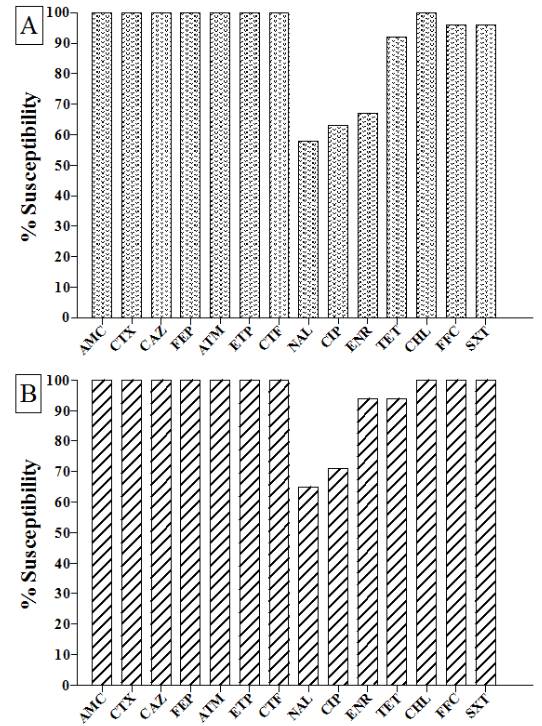ABSTRACT:
Salmonella Gallinarum (S. Gallinarum) and Salmonella Pullorum (S. Pullorum) are poultry host-specific, agents of fowl typhoid and pullorum disease, respectively. These biovars cause septicemic infections, resulting in high mortality. Outbreaks are frequently reported worldwide, causing losses due to the elimination of infected flocks and treatments. The use of antimicrobial agents is frequent in poultry farms to prevent or treat gastrointestinal infections. In the present research it was evaluated the antimicrobial susceptibility of 50 S. Gallinarum and S. Pullorum isolates, from outbreaks that occurred between 1987 to 1991 and 2006 to 2013. The comparison of the susceptibility profiles showed that all isolates were susceptible to β-lactams. All isolates from 1987-1991 were susceptible to all antibiotics tested except NAL and CIP (78%). The susceptibility profile of S. Gallinarum (2006 - 2013 period) was the following NAL (58%), CIP (63%), ENR (67%), TET (92%), FFC (96%) and SXT (96%). S. Pullorum isolates (2006 - 2013 period) showed the following susceptibility rates to NAL (65%), CIP (71%), ENR (94%) and TET (94%). All isolates were susceptible to β-lactams tested, however, resistance to quinolones and fluoroquinolones increased over time. Furthermore, low levels of resistance to other antibiotics were found in recent isolates, such as tetracyclines.
Key words:
quinolones; chicken; fowl typhoid; antimicrobial susceptibility; Salmonella.

 Thumbnail
Thumbnail
